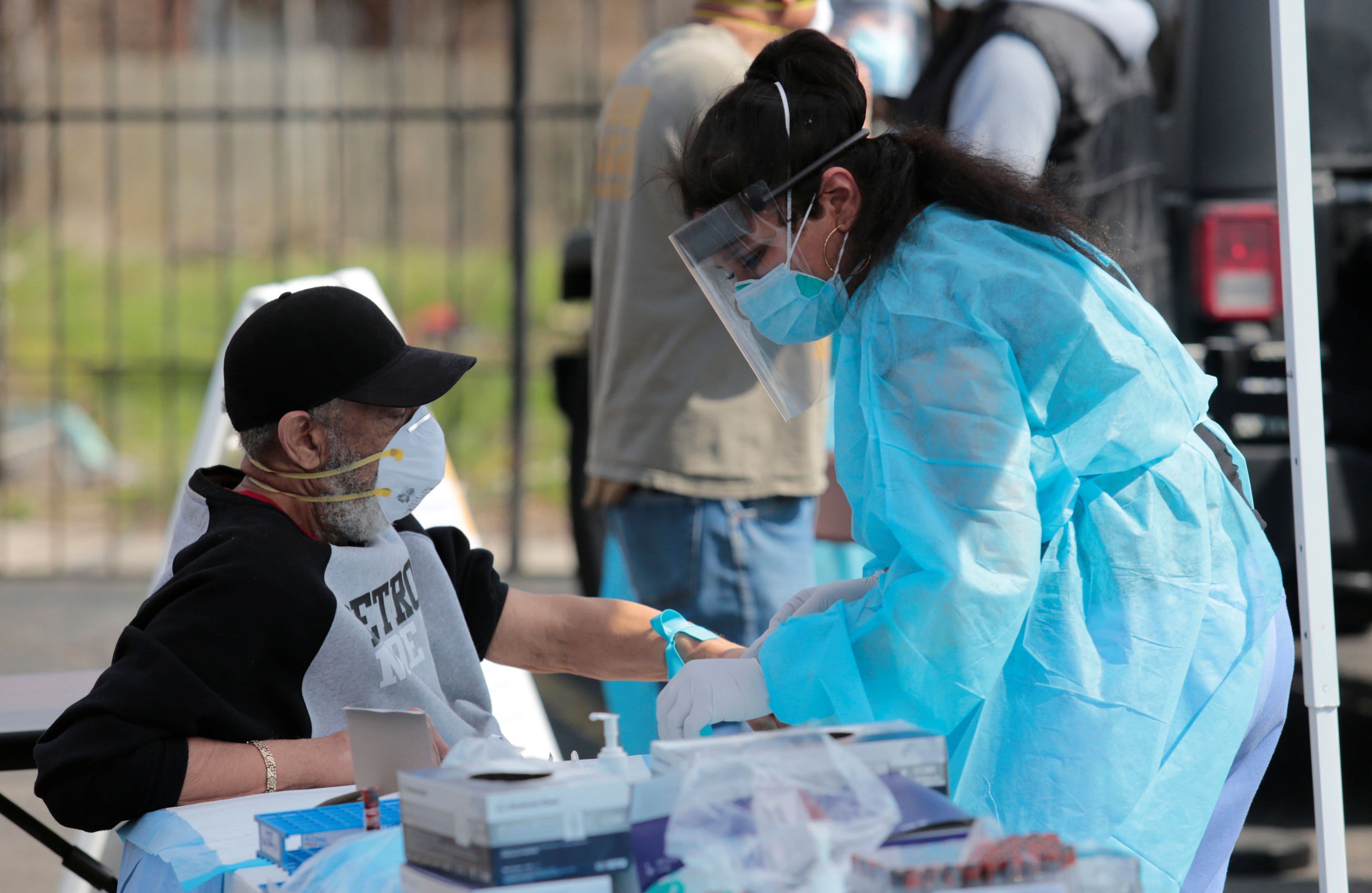
A Detroit resident is tested for free for the coronavirus disease (COVID-19) and antibodies at the Sheffield Center in Detroit, Michigan, April 28, 2020.
Rebecca Cook | Reuters
Coronavirus cases in the Midwest are beginning to increase following warnings from top U.S. health officials that the country’s heartland could be vulnerable to new outbreaks.
Coronavirus cases were growing by 5% or more, based on a weekly average to smooth out daily reporting, in 21 states and Washington D.C. as of Saturday, according to a CNBC analysis of data collected by Johns Hopkins University, an increase from 12 states on Monday.
Several Midwestern states were among those reporting growing cases— Indiana, Iowa, Kansas, Michigan, Minnesota, Nebraska, North Dakota, Ohio and South Dakota.
Nationally, however, cases continue to decline, though at a slower pace than reported in previous days. The U.S. reported an average of 41,638 new infections a day over the last week, a decline of more than 5% compared with the prior week, according to a CNBC analysis of Hopkins’ data.
Sun Belt states that have spent the summer months grappling with outbreaks are showing signs of improvement. Texas, Florida, California and Arizona all reported declines greater than 15% compared with a week ago.
Midwest ‘is getting stuck’
The nation’s top health officials, including White House coronavirus task force members Dr. Anthony Fauci and Dr. Deborah Birx, have warned that hotspots could arise in the Midwest, which hasn’t witnessed the worst of the nation’s outbreak so far.
In July, Fauci pointed to the so-called positivity rate, or the percentage of tests run that are positive, that appeared to be rising in those states — an early indication that the outbreak is worsening.
Centers for Disease Control and Prevention Director Dr. Robert Redfield told Dr. Howard Bauchner with the Journal of the American Medical Association last week that there are worrying signs in the middle of the country where cases appear to be plateauing but not falling. The area “is getting stuck,” which is a concern as seasonal influenza threatens to overwhelm hospitals and cause preventable deaths, he said.
“We don’t need to have a third wave in the heartland right now,” Redfield said. “We need to prevent that particularly as we’re coming to the fall.”
The virus is likely to spread in rural America, which has been “largely unaffected to date” by the worst of the nation’s coronavirus outbreak, and “every community is vulnerable,” former Food and Drug Administration Commissioner Dr. Scott Gottlieb told CNBC last week.
“Really, an outbreak can happen anywhere,” he said.
State officials have taken some action to prevent further spread. Ohio Gov. Mike DeWine ordered K-12 students to wear face coverings when they return to school and limited the events at the state’s county fair. Iowa Gov. Kim Reynolds ordered bars to close in some of the states most populated counties on Thursday and continued to urge residents to wear face coverings, though they’re not enforced.
Schools return
The troubling hotspots in the Midwest come as universities try to return students to campus this fall, though some have reported hundreds of cases and students in quarantine only a few weeks into the semester.
“People need to understand that there are going to be cases of Covid when you have 50,000 people together,” said Dr. Preeti Malani, chief health officer and professor of medicine and infectious disease at the University of Michigan.
“It’s a matter of if you have the infrastructure in place to identify cases — testing, surveillance, random testing of asymptomatic people, quarantine, contact tracing, isolation — and you have done what you can to reinforce public health mitigation efforts,” she said.
The University of Notre Dame in South Bend, Indiana, has reported more than 500 cases since the beginning of this month. The university nearly sent students home before deciding on Friday to allow students to return to class once its positivity rate declined from above 10% to nearly 6%.
The University of Iowa reported 130 cases after the first week of class for a positivity rate of 13.6%, though the university said it still has “adequate isolation and quarantine housing available.”
Kansas State University reported an outbreak at four sorority houses on Friday, resulting in more than 20 cases, according to the Riley County Health Department. The university canceled all sorority and fraternity events until Sept. 10. At the University of Kansas, the sorority and fraternity community reported 270 cases for a 10.01% positivity rate, according to an update Friday, though the university said the total cases so far are manageable.
Correction: 21 states and Washington D.C. are reporting rising coronavirus cases. A previous version of this story misstated the number of states.
